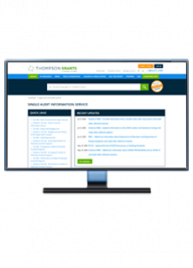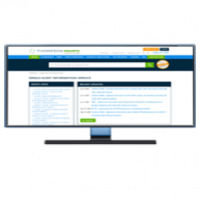Sneak Preview: New System Aims To Halt Duplicate SNAP Payments

(The following was excerpted from a recent Thompson Grants Compliance Expert article.) State Supplemental Nutrition Assistance Program (SNAP) agencies, over the next five years, must establish a process to provide data through a new interstate data system, known as the National Accuracy Clearinghouse (NAC), which is aimed at preventing duplicate participation and reducing the risk of improper payments within the SNAP program. The U.S. Department of Agriculture Food and Nutrition Service (FNS), in a recent interim final rule that becomes effective on Dec. 2, provided details about the NAC and the information that states are required to provide.
The interim final rule, which amends FNS regulations on SNAP participation and eligibility at 7 C.F.R. Parts 272 and 273, implements provisions established under the Agriculture Improvement Act of 2018 (Pub. L. 115-334), which required FNS to establish NAC, a technology-based solution designed to prevent individuals from receiving SNAP benefits in more than one state at the same time (i.e., duplicate participation).
“While the system will catch and prevent fraudulent and unintentional dual participation, it will also result in a more seamless experience for participants who move from state to state and need to disenroll in one state to apply in another,” FNS explained, adding that duplicate participation occurs most often when people move to another state and forget to notify their SNAP agency in their former state, or when the state agency doesn’t properly process the notification. “This [rule] will help end participants’ benefits in the original state so the new state can open the case, initiate benefits and ensure seamless access to the nutrition assistance participants rely on.”
Existing FNS rules already prohibit SNAP participants from receiving monthly benefits from more than one state. Regulations at 7 C.F.R. §273.3 require that a household beneficiary live in the state where it files a SNAP application and stipulates that no individual may participate as a member of more than one household or in more than one project area (i.e., a state) in any month, unless the individual is a resident of a shelter for battered women and children.
Program regulations at 7 C.F.R. §273.2(f)(1)(vi) require that state agencies verify applicants’ residency before certifying a household that is initially applying. In addition, regulations at 7 C.F.R. §272.4(e) require state agencies, in an effort to prevent duplicate participation, establish systems that check names and Social Security numbers, at a minimum, for duplication, and other identifiers such as birth dates or addresses as appropriate.
Beginning in 2013, several states participated in a NAC pilot program under which each participating state agency submitted a daily file of its entire SNAP participant caseload, which was integrated into a list of all SNAP participants receiving benefits in the participating states. If a state agency identified that an applicant was receiving benefits in another state, the state would contact the previous state agency where the applicant is already receiving benefits to close the individual’s case or remove the individual from the household.
(The full version of this story has now been made available to all for a limited time here.)
Join us for our following Thompson Grants events:
Advanced Federal Grants Forum | Oct. 25-27, 2022 | Phoenix, Ariz.
Federal Grants Forum | Dec. 7-9, 2022 | Fort Lauderdale, Fla.



